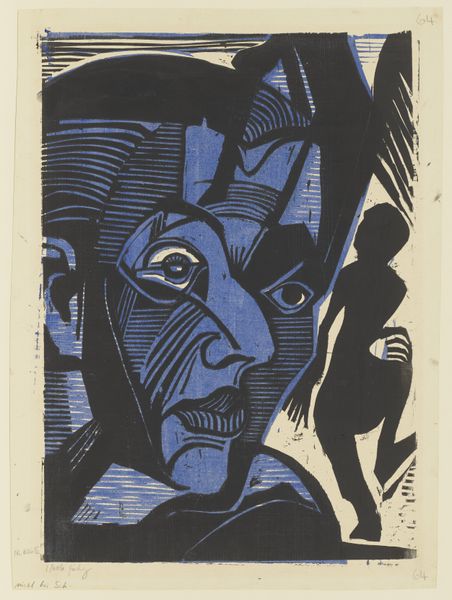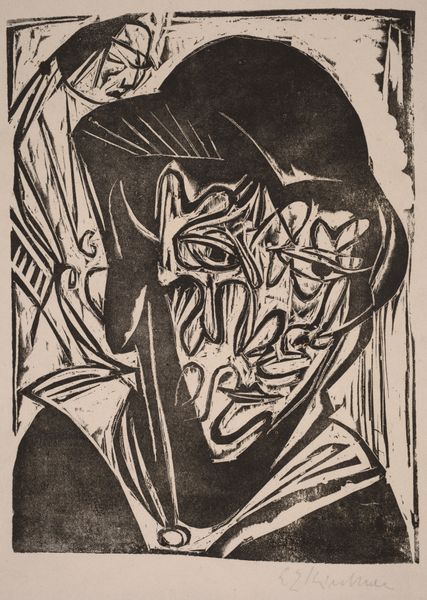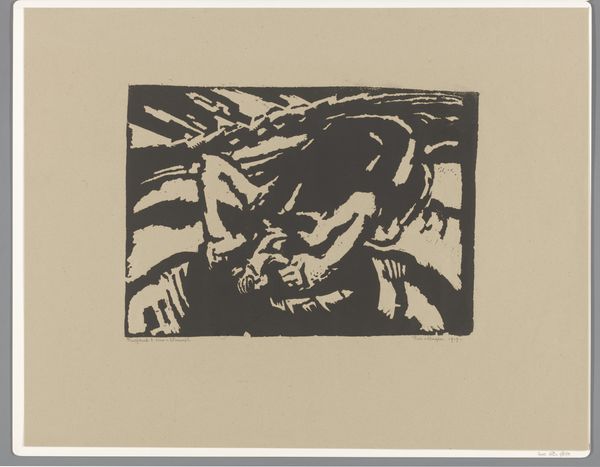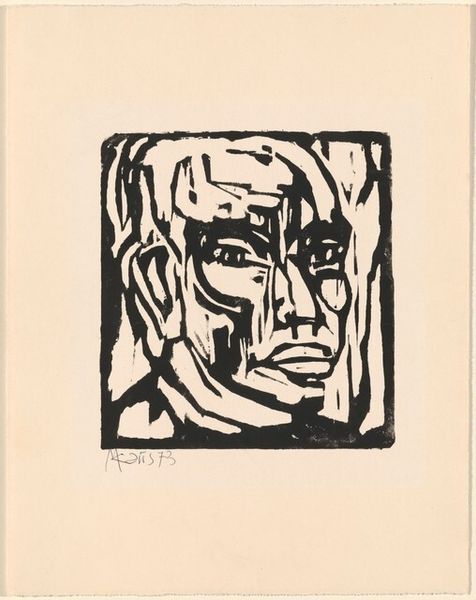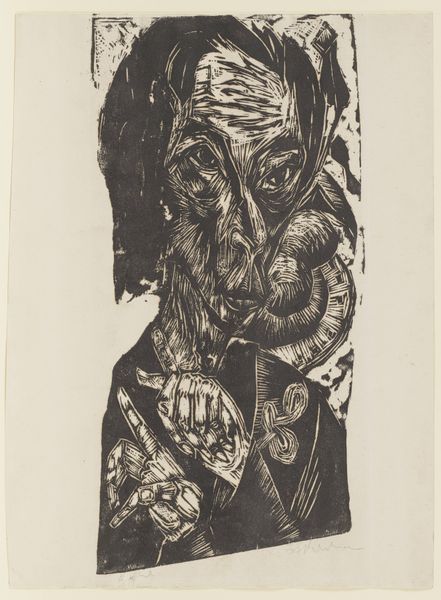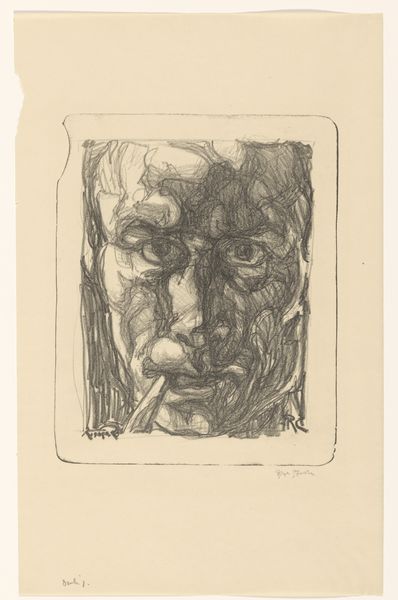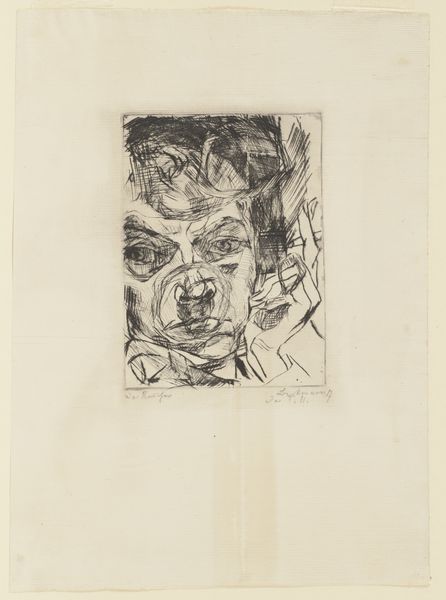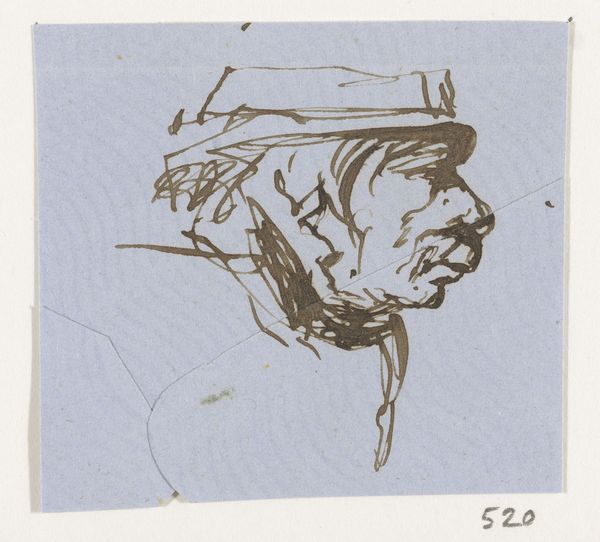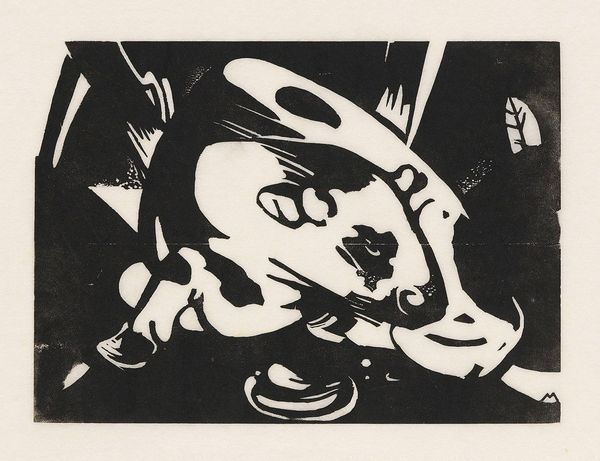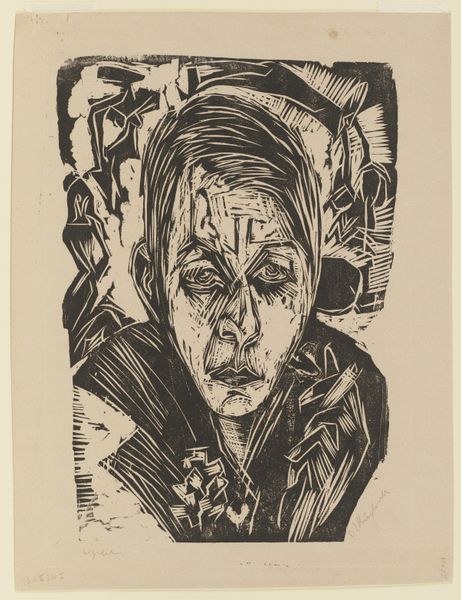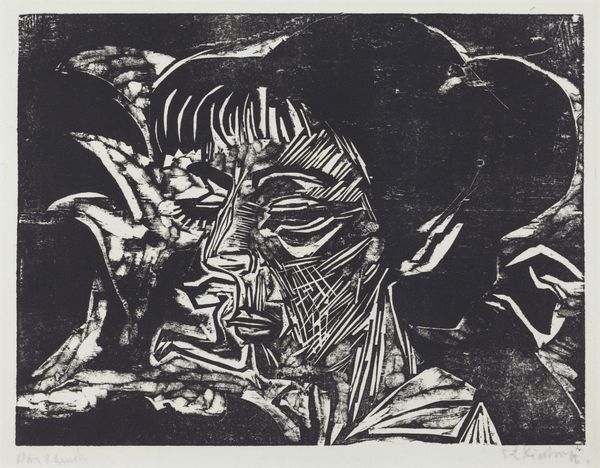
print, woodcut
#
portrait
# print
#
caricature
#
caricature
#
german-expressionism
#
figuration
#
expressionism
#
woodcut
#
line
#
portrait drawing
#
portrait art
Dimensions: height 246 mm, width 248 mm
Copyright: Rijks Museum: Open Domain
Curator: Here we see "Head of a Laughing Man," a compelling woodcut housed at the Rijksmuseum. Its creation is dated between 1900 and 1954, part of the collection of work by Jo Bezaan. Editor: My first thought is how incredibly unsettling this is. That manic grin…it’s almost grotesque. The stark black and white only amplifies that sense of unease, creating an unsettling and confrontational atmosphere. Curator: It certainly challenges typical notions of portraiture! This print embraces the expressiveness inherent to woodcut, allowing the artist to reduce form to powerful symbolic outlines. Notice how Bezaan uses sharp lines to capture, not necessarily the likeness, but the *essence* of that almost deranged joy. It speaks volumes about emotional extremity. Editor: Absolutely, it’s Expressionist in its rawest form. Given the turbulent social and political context of the time, is this a comment on the societal anxieties and hypocrisies masked by superficial joviality? Or a response to a deeper social crisis, like post-war disillusionment? Curator: It resonates with both of those interpretations, certainly. The figure’s exaggerated features, coupled with the graphic starkness, definitely recall earlier traditions of caricature. Those dark shadows heighten an atmosphere of inner torment. And one notices that even though this seems like an obvious "laugh," that symbolism is quite ambiguous. Is he truly happy or simply performing? Editor: I see it reflecting the performativity of joy – something that feels very relevant still. The forced smile as a mask for deeper anxieties. And within Expressionism, these individual "masks" frequently mirrored society's own hidden traumas. So who are we laughing at—ourselves, each other, or is it a cry for help? Curator: Or all three at once. These archetypal representations echo anxieties across diverse societies, linking personal struggles to the public consciousness across generations. Art, indeed, transforms our ability to perceive emotion, pushing viewers towards more visceral levels of understanding and contemplation. Editor: It makes you think about how joy, presented this way, is still intrinsically tied to vulnerability and the societal forces influencing expressions of freedom. Thanks for the reminder about the layers here. Curator: The beauty of it is that it encourages continuous reflection. A poignant demonstration of just how visual symbols remain evocative long after they're rendered.
Comments
No comments
Be the first to comment and join the conversation on the ultimate creative platform.
